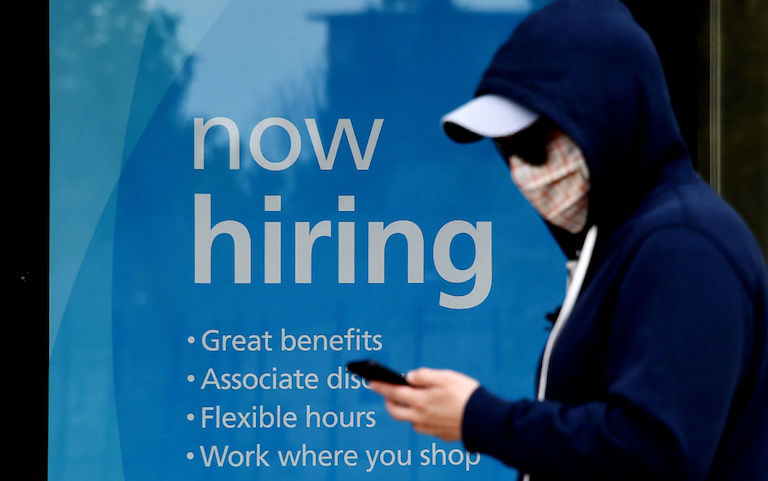Slowly but surely, forecasts for unemployment in the UK have been revised downwards. Alongside Rishi Sunak’s Budget earlier this month, the Office for Budget Responsibility significantly changed their prediction for peak unemployment: from the 11.9 per cent predicted in the July forecast down to 6.5 per cent. This was spurred on by an extension of the furlough scheme, a growing economic resilience to lockdowns and, of course, the spectacular rollout of the vaccines (over half the adult population has now been vaccinated with at least one dose).
But the latest update from the Office for National Statistics, published today, has provided an early surprise. The headline unemployment figure has fallen slightly again: from 5.1 per cent in the three months leading up to December 2020, down from five per cent in the three months up to January 2021.
The real test of the furlough will come later in the year
This stabilisation in the unemployment rate, especially over a period that saw virus cases rising and lockdown measures renewed, is being chalked up to the furlough scheme. This is currently estimated to be supporting just under five million employees while many sectors are forced to remain shut down. Compared to the rest of Europe, the UK’s unemployment rate continues to sit on the lower end of the spectrum, despite still being under one of the strictest lockdowns in the developed world.
Even if this slight fall turns out to be a blip – the consensus is that unemployment will be going up this year, as furlough eventually comes to an end and we discover where the economy has adjusted to – today’s data update is a good sign. It suggests the UK stands a decent chance of avoiding mass unemployment, as was originally predicted when the crisis hit.
That’s not to say it’s all good news for Britain’s labour market. Job vacancies have stalled: now at just over 600,000, that’s 26.8 per cent fewer vacancies than were on offer the year before. The number of total hours worked has fallen too, highlighting that opportunities to work are being heavily limited due to current restrictions. Even the latest report of a 4.8 per cent annual growth in total pay cannot be taken at face value: the appearance of average wage growth is not a result of bigger pay packs, but the loss of employees towards the lower end of the pay spectrum. As more low-paid workers have lost their jobs, the average salary has risen on paper.
The real test of the furlough will come later in the year, when it is all but inevitable we discover that some of those working at home no longer have a job to come back to. But today’s figures give a boost of optimism, not just to the scheme, but to the state of the UK’s economy, despite the chaos and uncertainty it’s been subject to for a year now.







Comments